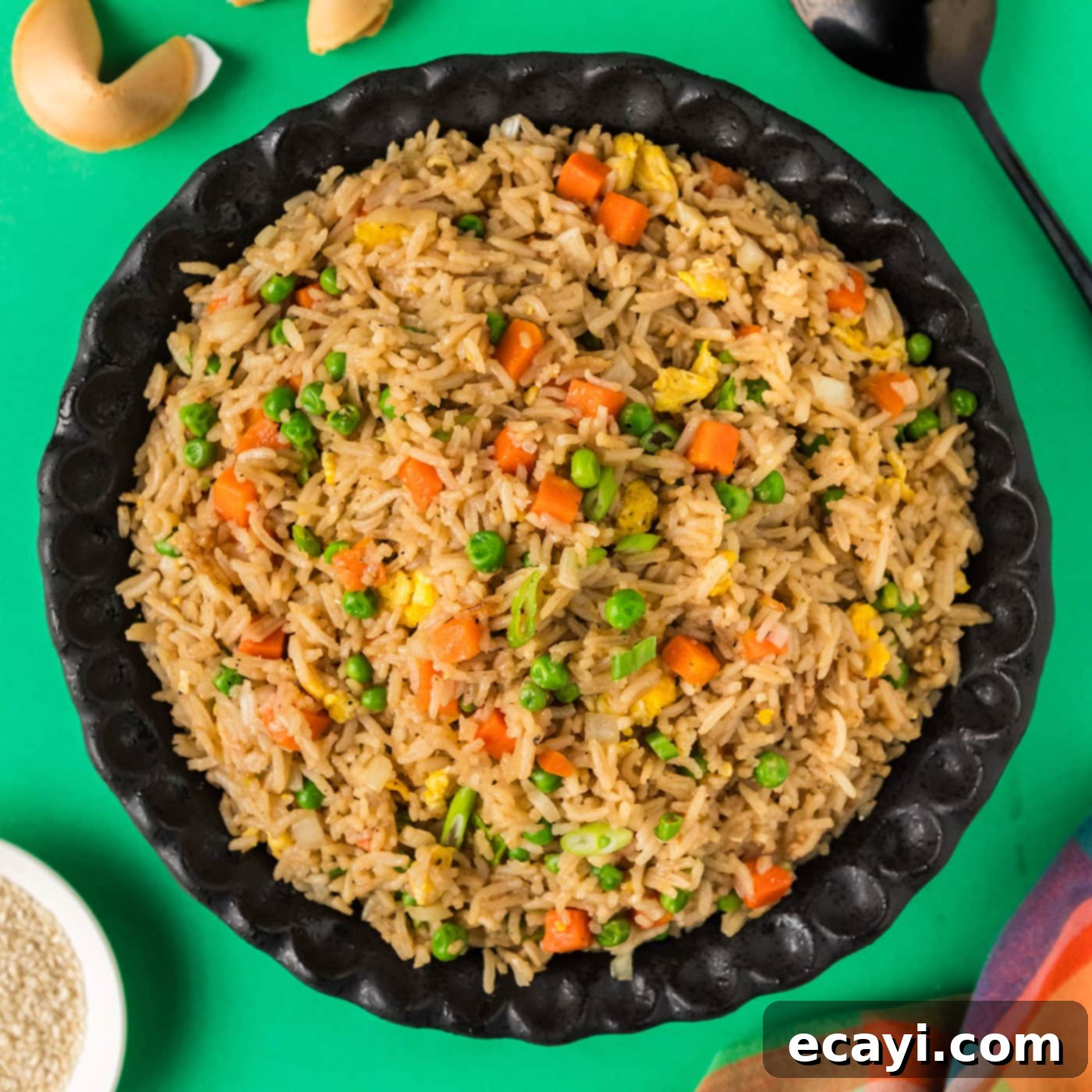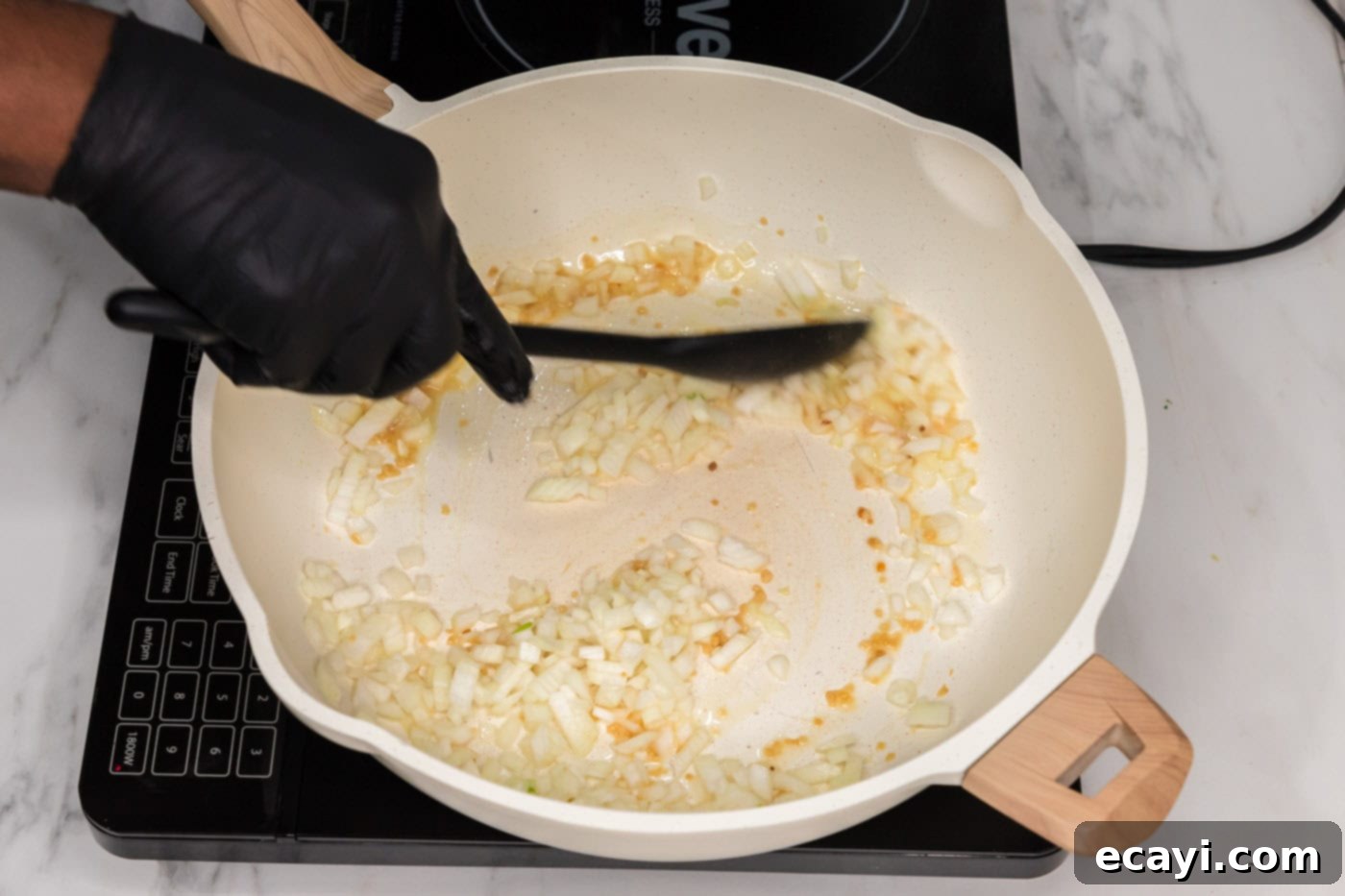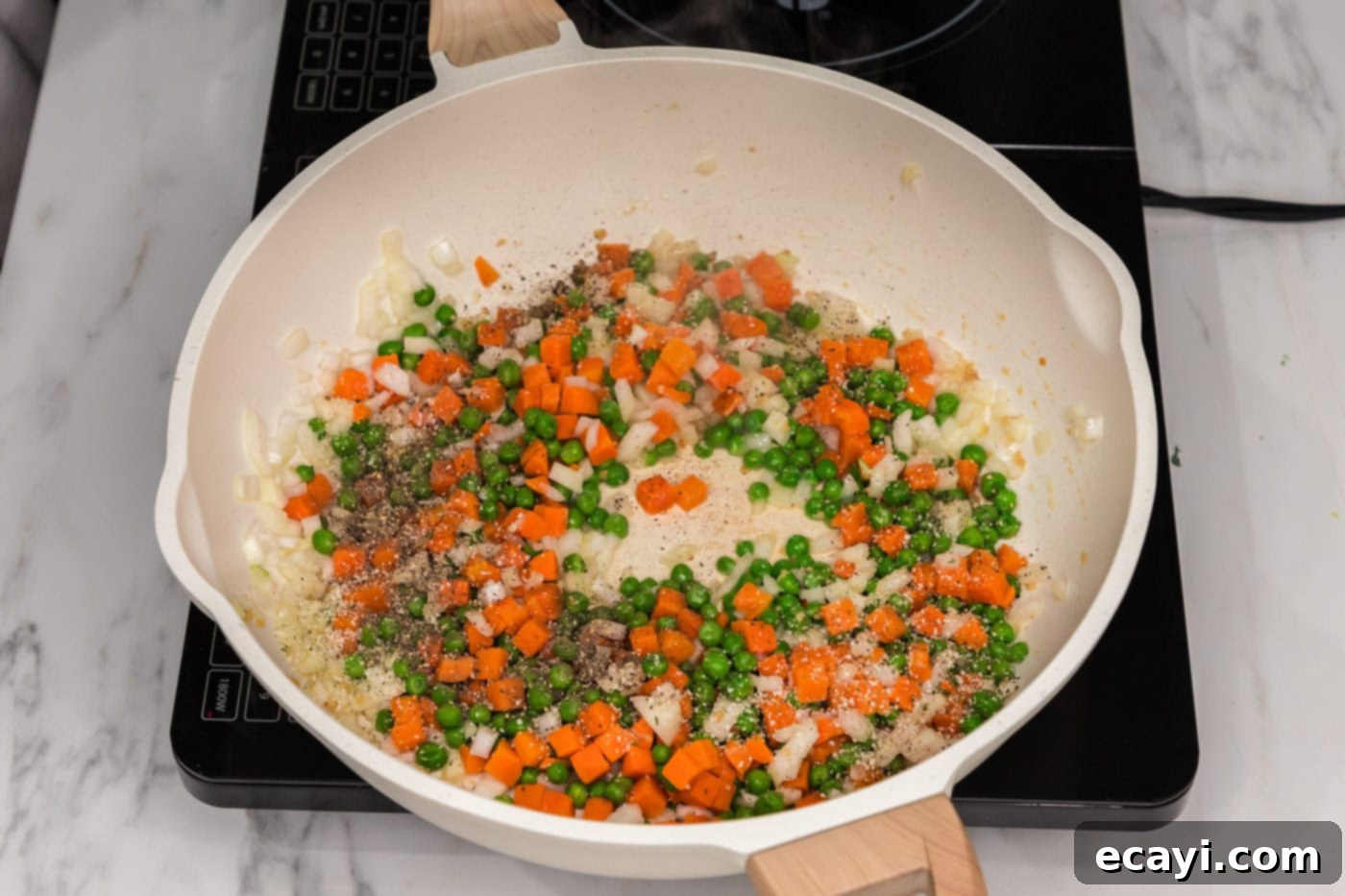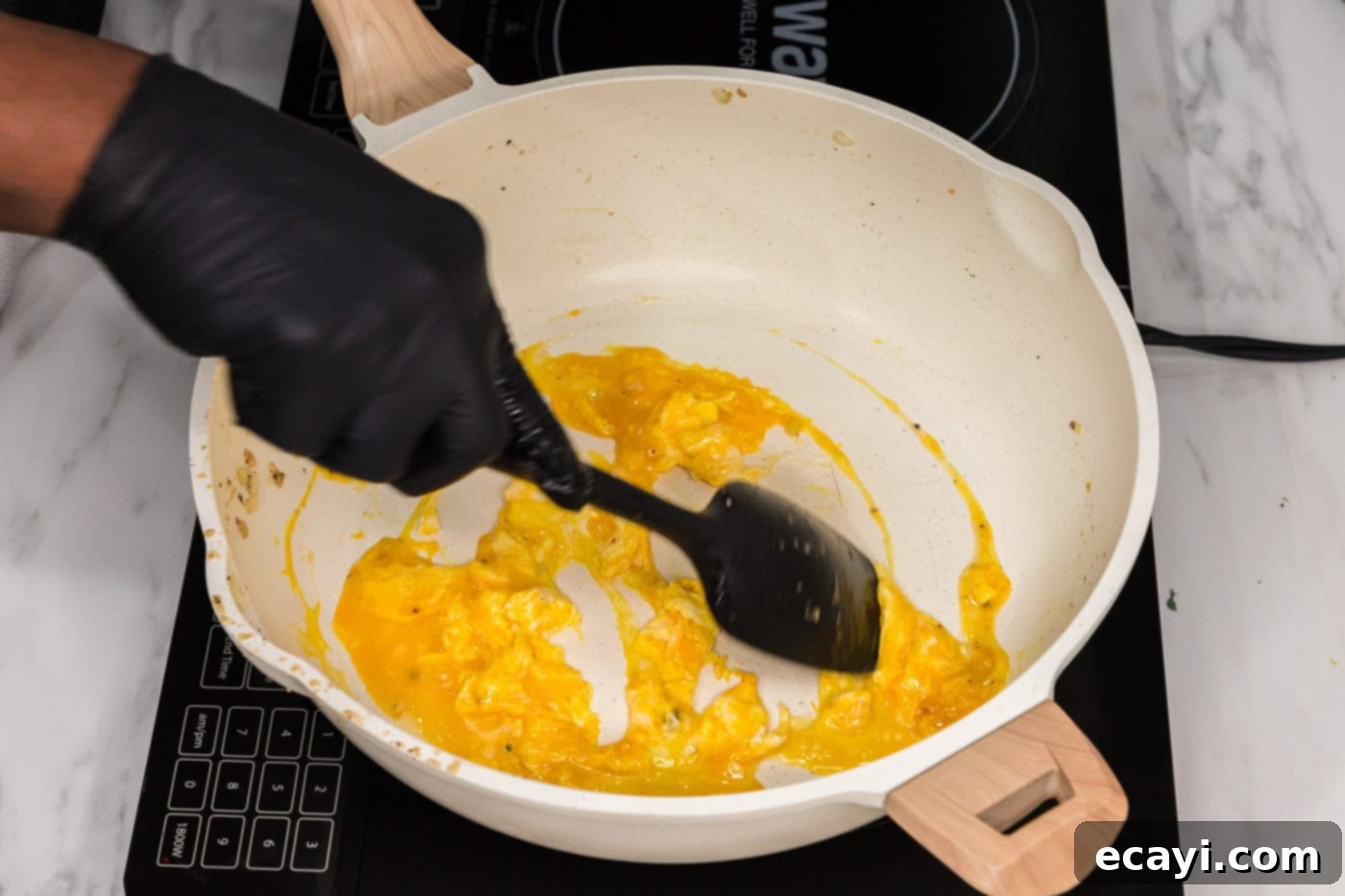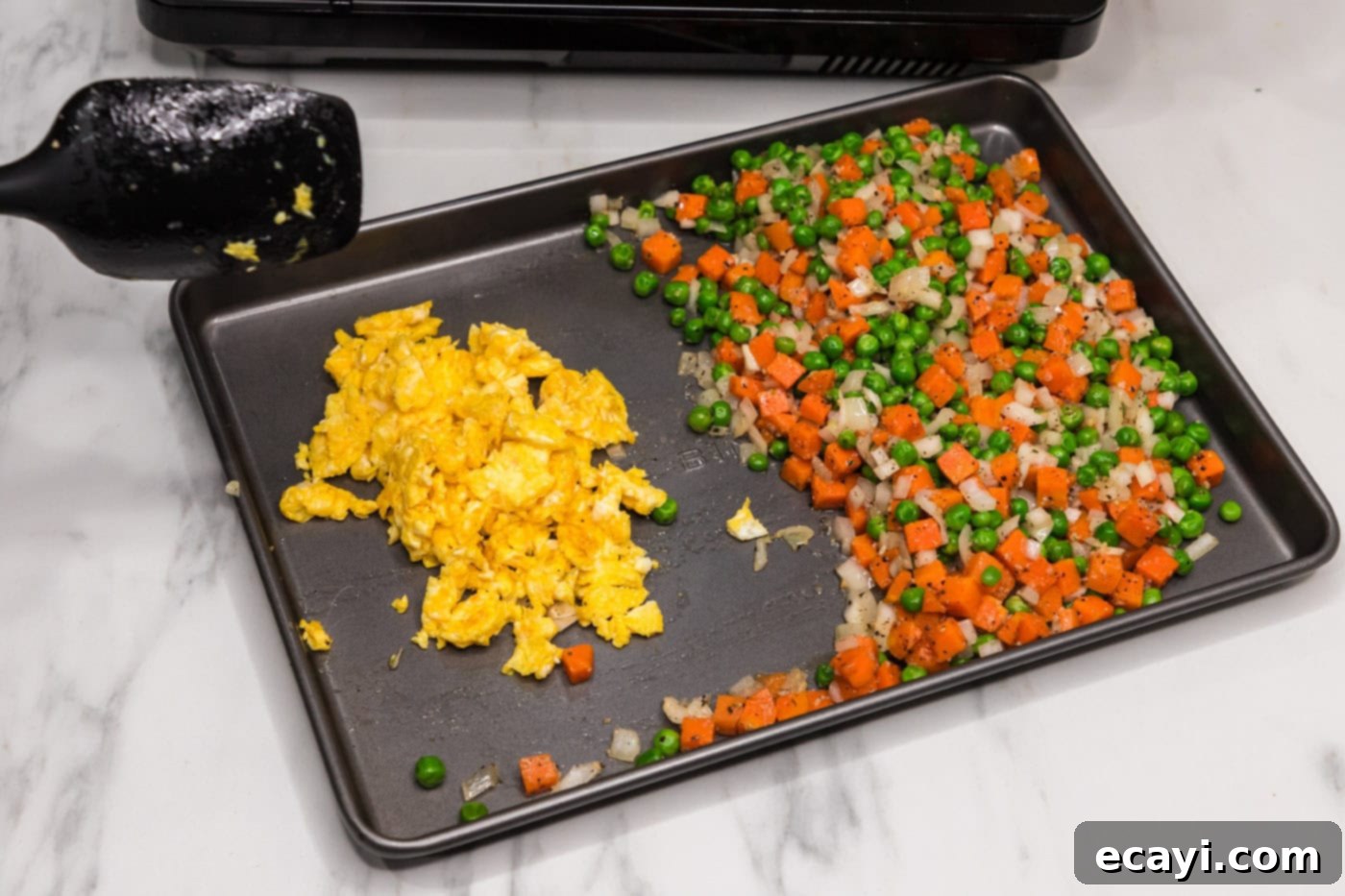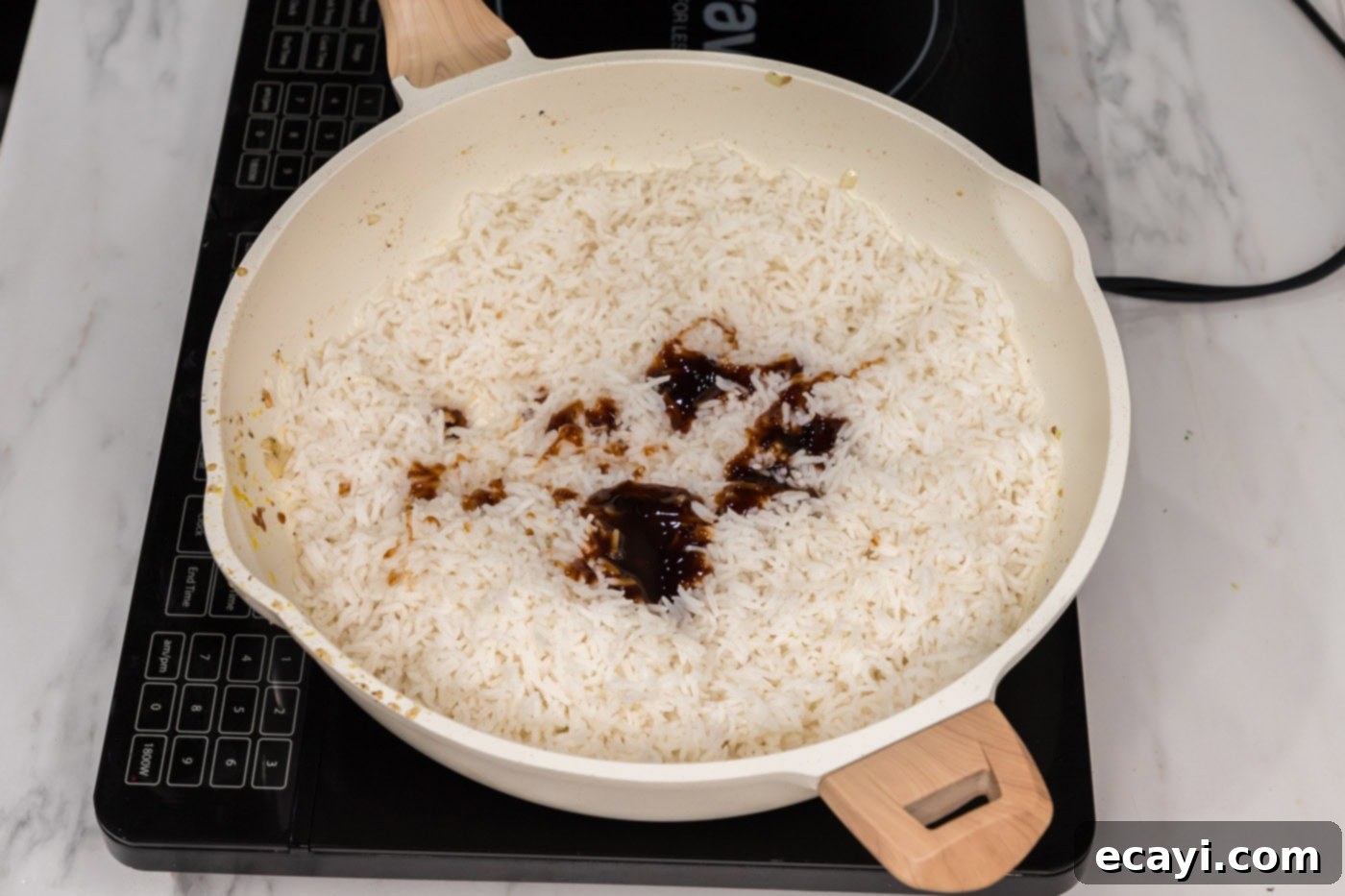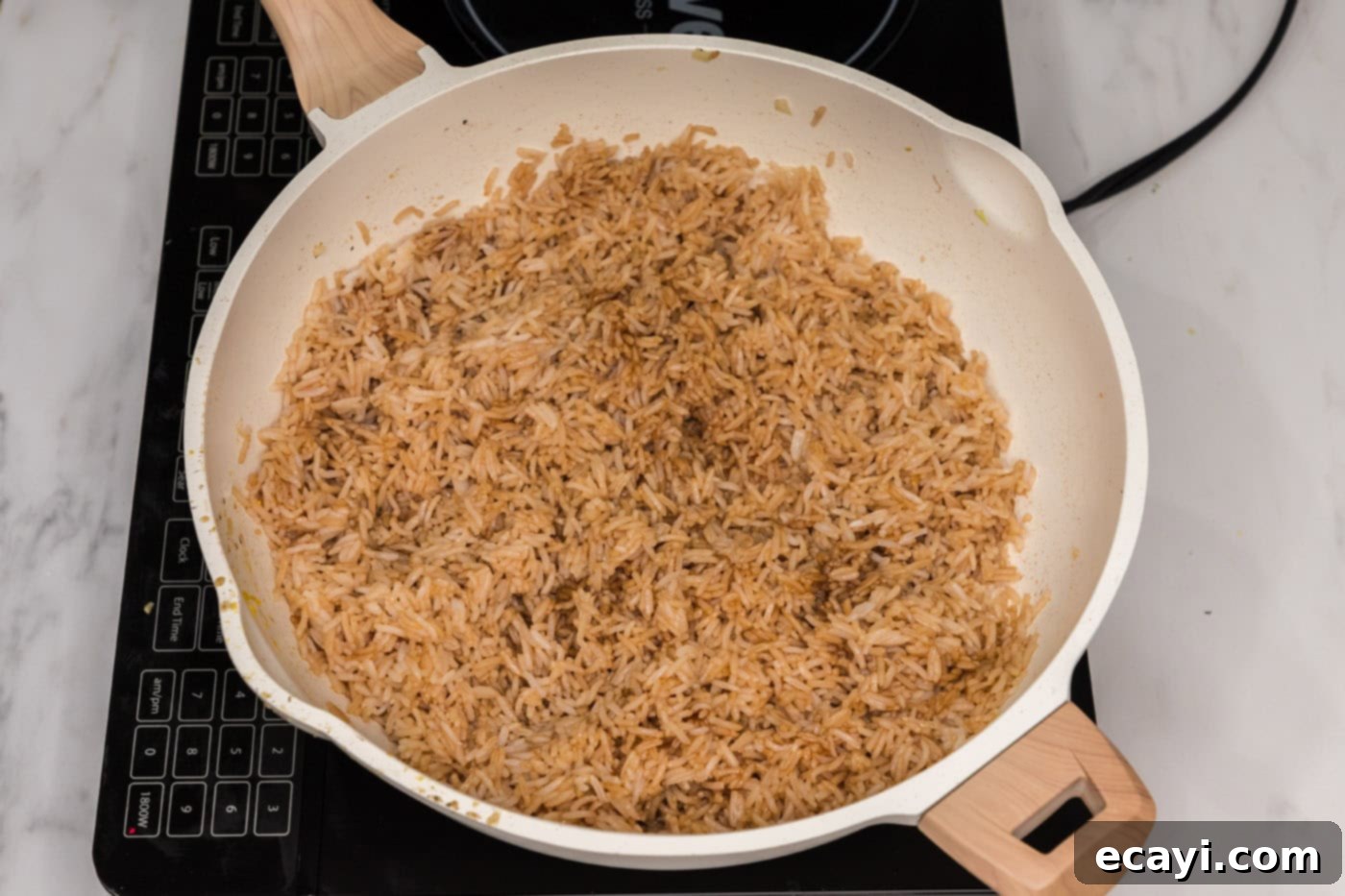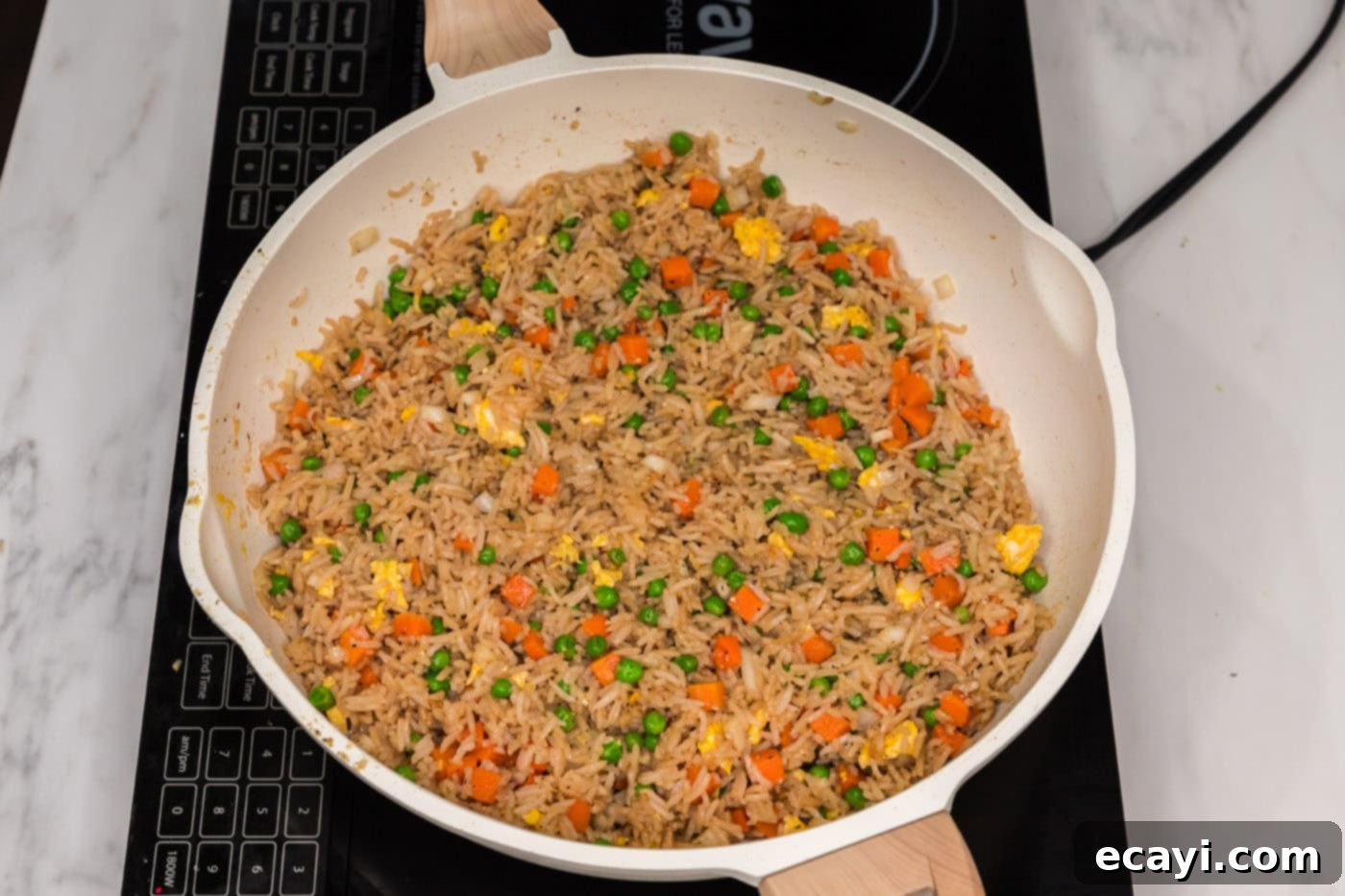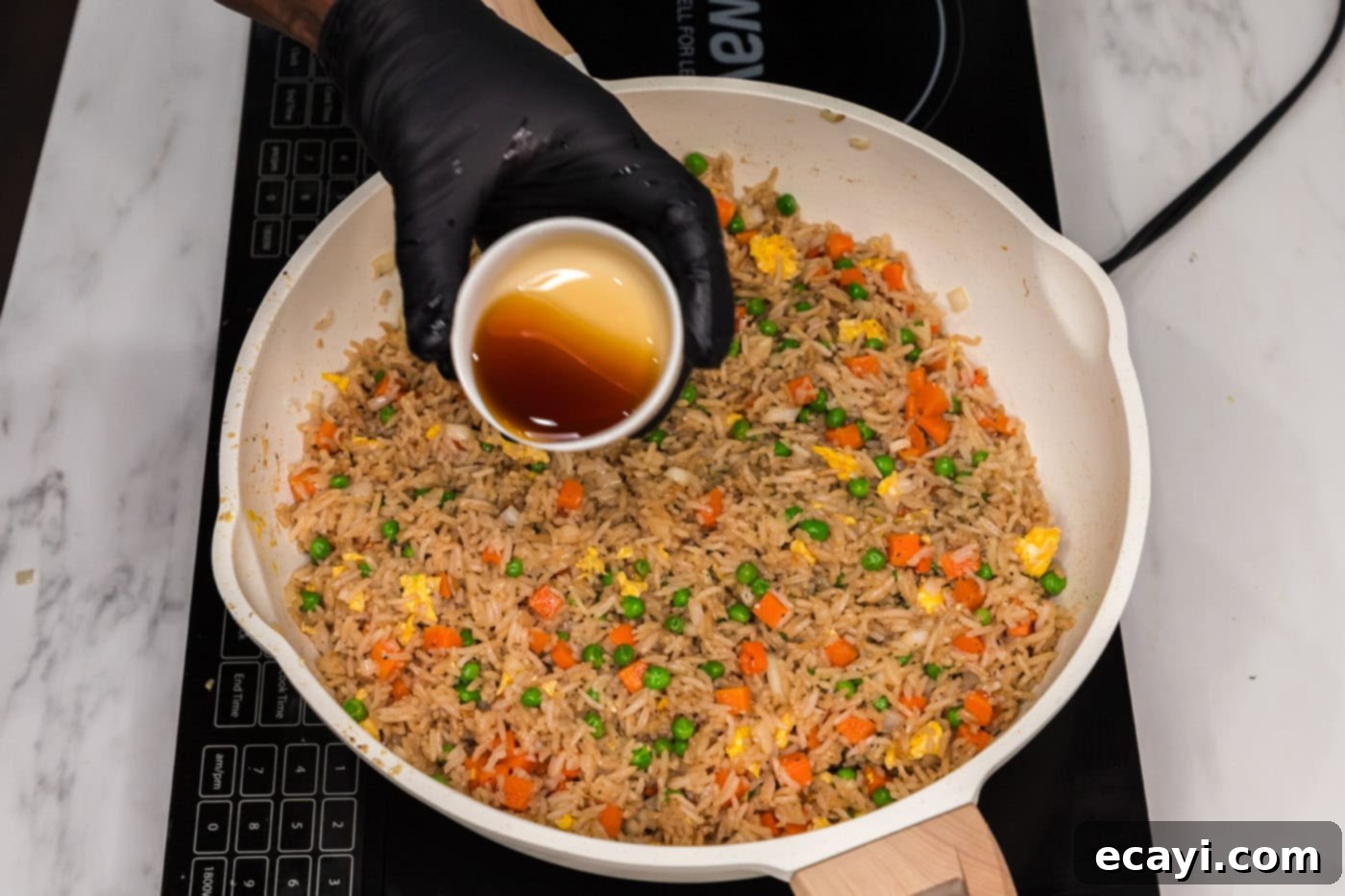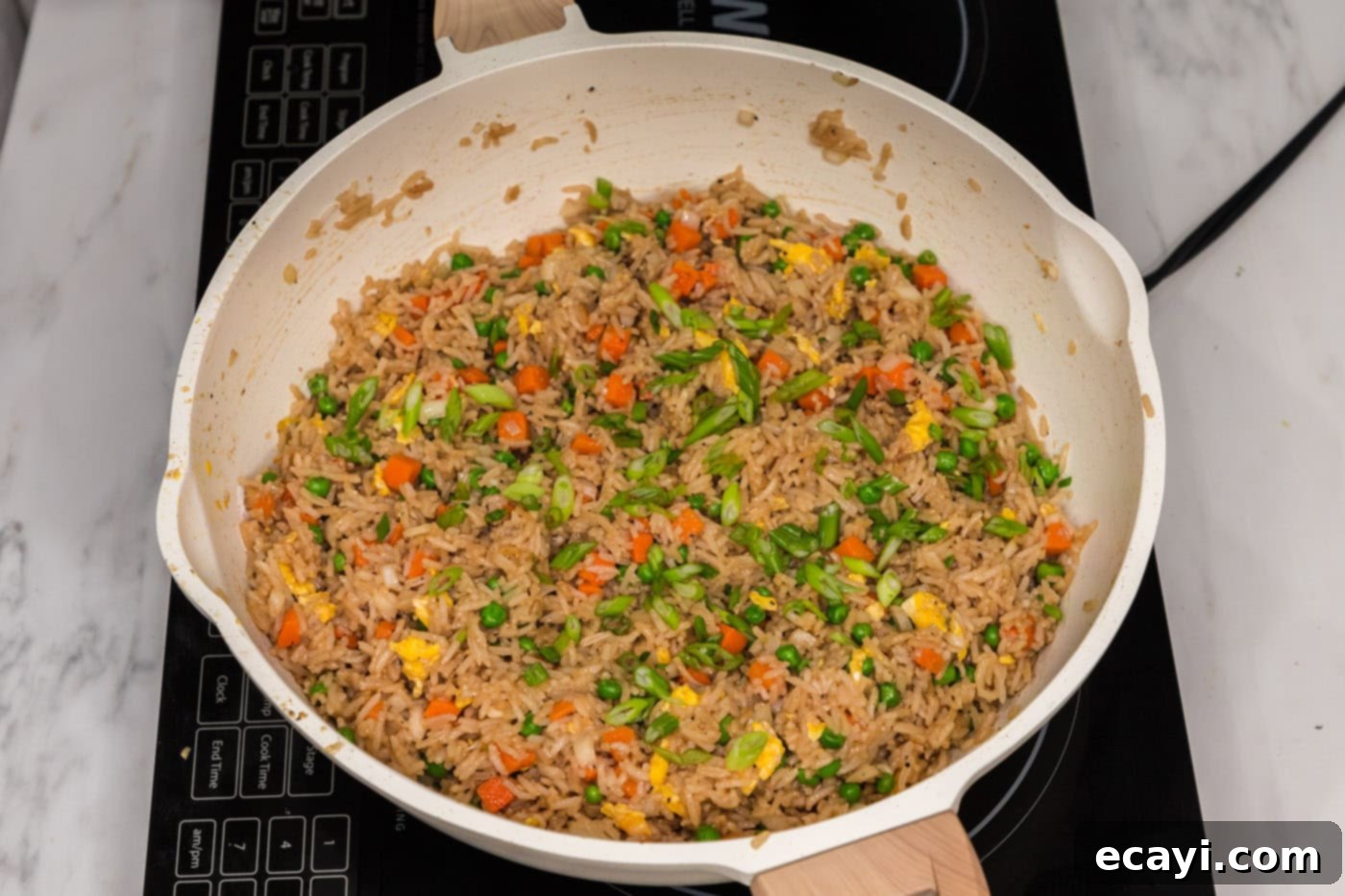Easy & Customizable Fried Rice Recipe: Transform Leftovers into a 30-Minute Meal!
Discover how to effortlessly transform your leftover rice into a vibrant, flavorful, and incredibly satisfying meal in just 30 minutes! This easy fried rice recipe is not only a fantastic way to utilize ingredients you already have on hand but also offers endless possibilities for customization. Whether you’re craving a quick weeknight dinner or an impressive side dish, this guide will provide you with the essential techniques and tips to create perfect homemade fried rice every time. Get ready to elevate your culinary skills and enjoy a delicious, Asian-inspired dish that the whole family will love.
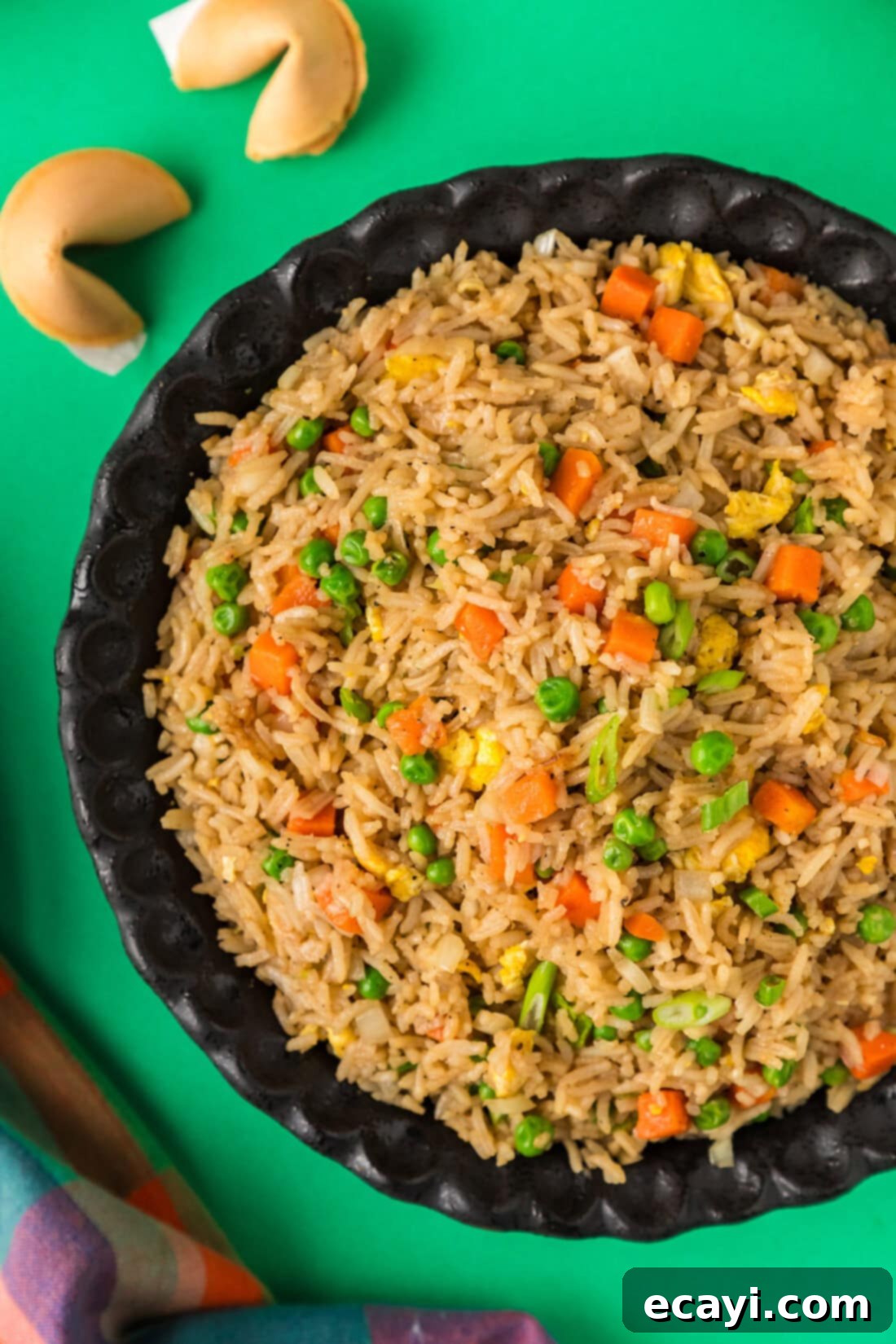
Why This Easy Fried Rice Recipe is a Must-Try
There’s something incredibly comforting and satisfying about a steaming plate of expertly prepared fried rice. Each spoonful offers a delightful medley of flavors and textures – fluffy rice, tender vegetables like peas and carrots, perfectly scrambled eggs, and that unmistakable savory umami punch from soy and oyster sauces. This dish isn’t just a humble side; it easily holds its own as a hearty main course, especially when you enhance it with your favorite proteins. Imagine succulent shrimp fried rice, savory pork fried rice, or even a robust chicken fried rice. For those who prefer a lighter touch, a classic vegetable fried rice packed with garden-fresh goodness is equally delightful.
Our recipe focuses on providing you with the ultimate foundational method for crafting exceptional fried rice. This robust base allows for incredible versatility, enabling you to tailor the dish precisely to your individual tastes and dietary preferences. Once you master this simple technique, you’ll be able to experiment with various additions, seasonings, and proteins, creating a unique fried rice experience every time. It’s a kitchen skill that transforms simple ingredients into an extraordinary meal, making it a staple in any home cook’s repertoire.
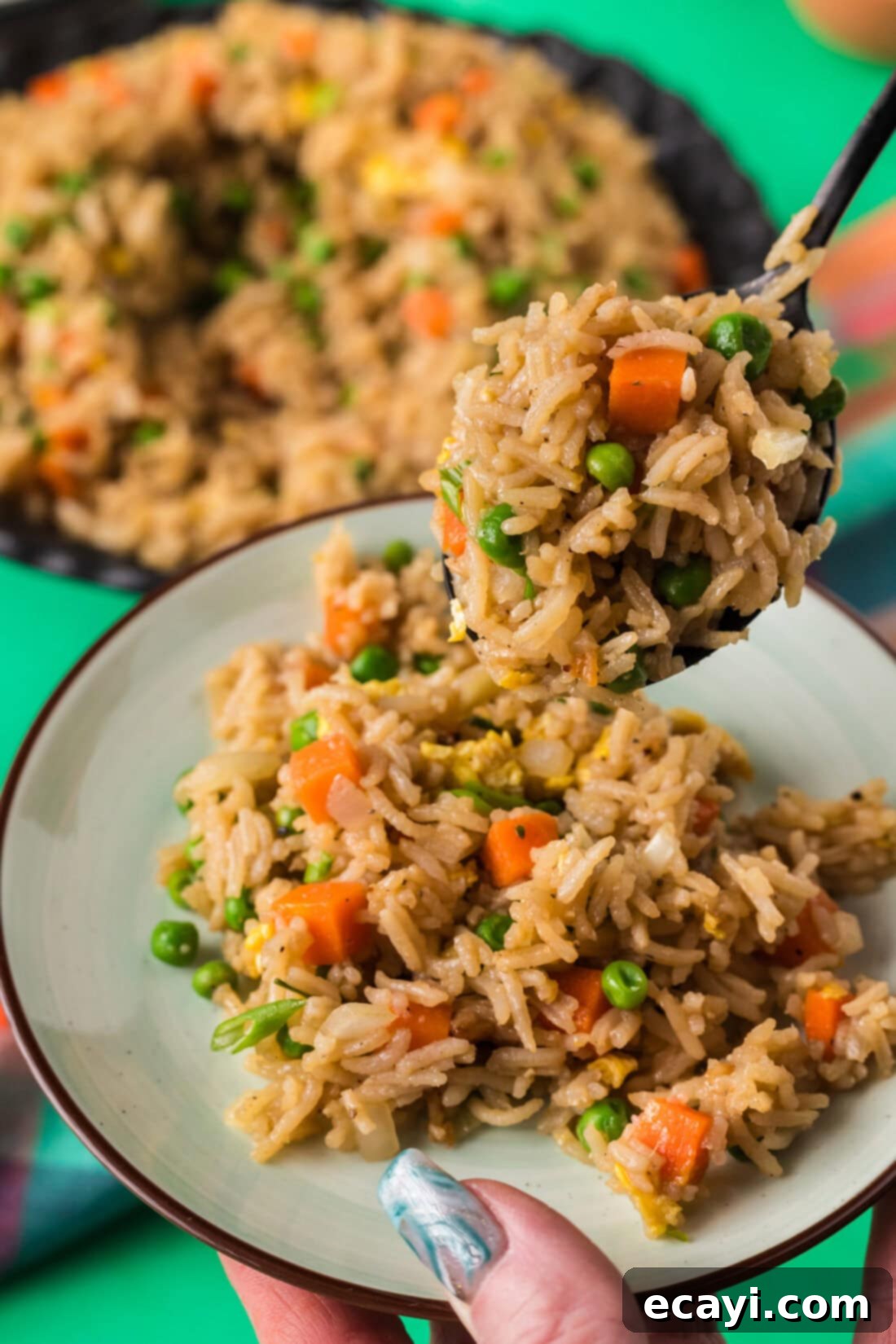
Essential Ingredients for Perfect Homemade Fried Rice
Gathering your ingredients before you start cooking is key to a smooth and enjoyable fried rice preparation. For precise measurements and detailed instructions, refer to the printable recipe card available at the conclusion of this post. Here’s a quick overview of what you’ll need to create this delectable dish:
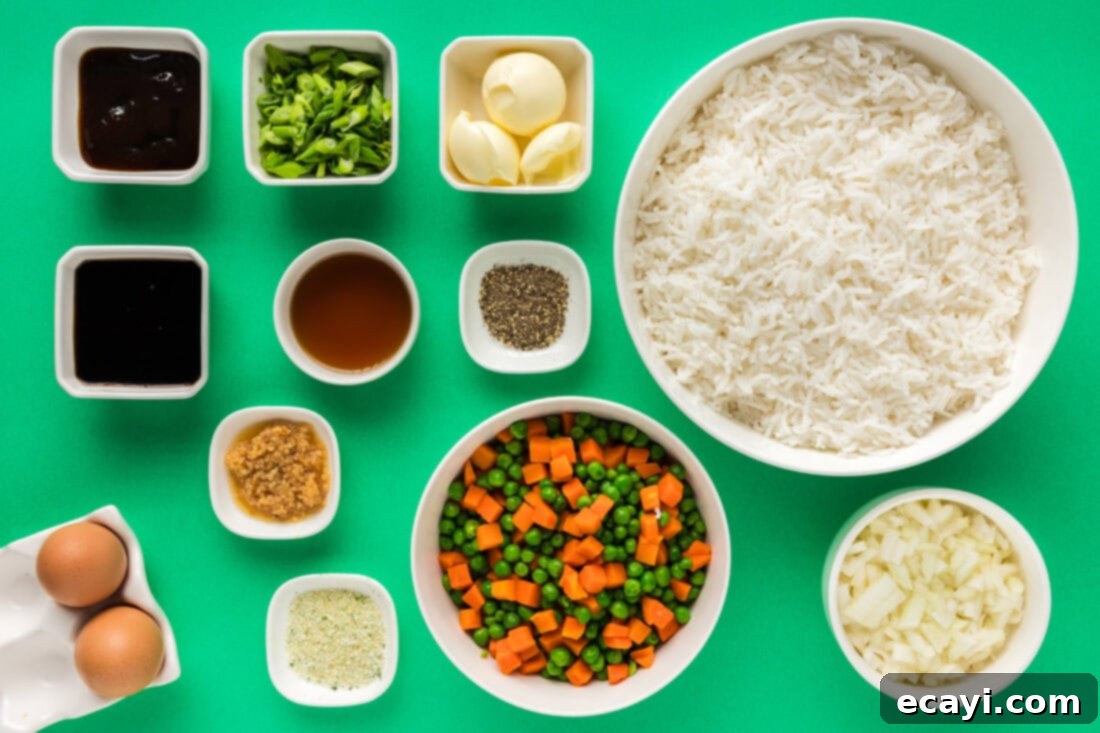
Detailed Ingredient Information and Smart Substitution Suggestions
Understanding each ingredient’s role and knowing how to make smart substitutions will make you a fried rice master. Let’s delve deeper into the components:
RICE: The Foundation of Flavor & Texture
The undisputed secret to truly great fried rice lies in using **leftover, chilled rice**. This isn’t just a suggestion; it’s a critical technique. When rice is cooked and then chilled, its starch molecules undergo a process called retrogradation, which firms them up and reduces moisture. This results in individual grains that won’t clump together or become mushy when stir-fried in a hot pan. Instead, you’ll achieve that desirable slightly chewy texture and distinct separation of grains that defines excellent fried rice.
If you don’t have leftover rice, don’t fret! You can cook fresh rice specifically for this recipe. Aim to cook approximately 2.5 to 3 cups of raw white rice (like Jasmine or long-grain white rice) to yield the 8 cups of cooked rice required. Once cooked, spread the hot rice thinly on a baking sheet or large plate and place it in the refrigerator for at least a few hours, or ideally overnight, to ensure it’s thoroughly chilled and dried out. Avoid using warm, freshly cooked rice directly, as it will steam and clump, hindering the frying process and resulting in a sticky, undesirable texture.
VEGETABLES: Adding Color, Crunch, and Nutrients
The classic trio of diced onion, peas, and carrots provides a wonderful balance of sweetness, earthiness, and texture. For ultimate convenience, we recommend using frozen peas and carrots, which require minimal preparation and cook quickly. However, fresh vegetables work beautifully too! If using fresh carrots and peas, ensure you sauté them until they are tender-crisp before incorporating them into the dish. This prevents them from being undercooked in the final product.
Feel free to get creative with your vegetable choices! Many other stir-fry friendly vegetables can be incorporated, such as finely diced bell peppers (red, yellow, or green), chopped broccoli florets, sliced mushrooms, corn kernels, or thinly sliced cabbage. Just remember to adjust cooking times based on the vegetable’s density, ensuring they are cooked through but still retain a slight bite.
EGGS: The Essential Protein & Binder
Large eggs are a non-negotiable component of traditional fried rice, adding a delicate richness, an extra layer of flavor, and helping to bind the ingredients together. They cook quickly and can be easily incorporated by scrambling them directly in the hot skillet.
SAUCES: The Heart of Umami Flavor
Soy sauce is fundamental, providing salty, savory depth. For best results, use a good quality regular or low-sodium soy sauce. Oyster sauce adds a unique layer of sweet, savory, and slightly smoky umami that is characteristic of authentic fried rice. If you’re vegetarian or vegan, look for mushroom-based vegetarian oyster sauce alternatives. Finally, a drizzle of toasted sesame oil right at the end imparts a nutty aroma and flavor that ties everything together. A touch of garlic salt and black pepper enhances the overall seasoning.
FATS: For Sautéing & Flavor
You’ll need a good quality cooking fat like olive oil or another high-smoke-point oil (like canola or vegetable oil) for sautéing your aromatics and vegetables. Butter is used for scrambling the eggs, adding richness and a lovely golden color.
Step-by-Step Guide: How to Make Easy Fried Rice at Home
These step-by-step photos and detailed instructions are designed to help you visualize each stage of making this delicious fried rice recipe. For a convenient printable version, complete with all measurements and full instructions, simply Jump to Recipe at the bottom of this page.
- Sauté Aromatics & Vegetables: Heat 1 Tablespoon of olive oil in a large skillet or wok over medium-high heat until it begins to shimmer. Add the minced garlic and sauté for about one minute until fragrant, being careful not to burn it.
- Cook Vegetables: Next, add the diced onions, frozen peas, and carrots to the skillet. Season with garlic salt and black pepper. Stir-fry for 3-4 minutes, or until the vegetables are tender-crisp. Transfer the cooked vegetables to a plate or separate pan and set aside. This step ensures the vegetables are perfectly cooked and prevents overcrowding the pan when adding rice.


- Prepare Eggs: In a small bowl, lightly beat the two large eggs with a fork until the yolks and whites are fully combined. This ensures even scrambling.
- Scramble Eggs: Return the empty skillet to the stove (there’s no need to wash it, as the residual flavors will add to the dish). Add 2 Tablespoons of butter and melt it over medium-high heat. Once melted, pour in the beaten eggs and stir regularly with a rubber spatula, breaking them into small pieces as they cook. Scramble until the eggs are fully cooked but still soft. Remove the scrambled eggs to the same plate or pan as the vegetables and set aside.


- Fry the Rice: Return the now empty skillet to the stove. Add the chilled cooked rice, oyster sauce, and soy sauce. Stir continuously, using a spatula to break up any clumps, ensuring the sauces are evenly distributed and coat every grain of rice. Fry for several minutes over medium-high heat until the rice is heated through and slightly toasted. This is where the magic happens – the rice gets that characteristic “wok hei” (breath of the wok) flavor.


- Combine All Ingredients: Once the rice is perfectly fried, add the previously cooked vegetable mixture and scrambled eggs back into the skillet with the rice. Stir gently but thoroughly to combine all the ingredients evenly. Ensure everything is well-mixed and heated through.

- Finish with Sesame Oil: Drizzle the toasted sesame oil over the fried rice. Stir it in well to distribute its aromatic, nutty flavor throughout the dish. This final touch adds a layer of depth that is crucial to the authentic taste of fried rice.

- Garnish and Serve: Garnish your delicious homemade fried rice with freshly sliced green onions (scallions), if desired. The green onions add a fresh, pungent bite and a beautiful pop of color. Serve immediately and enjoy!

Frequently Asked Questions & Expert Tips for Perfect Fried Rice
Using chilled, day-old rice is the single most important factor for achieving perfect fried rice. When cooked rice cools and chills, it undergoes a process called retrogradation, where the starch molecules recrystallize and become firmer. This reduces the moisture content and prevents the grains from clumping together or becoming mushy when they hit the hot pan. Cold, firm rice fries up beautifully, resulting in distinct, fluffy grains with that sought-after texture.
Store any leftover fried rice in an airtight container in the refrigerator for up to 3 days. To reheat, you can either warm it gently in a skillet over medium heat, stirring occasionally until heated through, or use a microwave. When reheating, you can optionally add a splash of water or a few drops of oil to help remoisten the rice and prevent it from drying out. Ensure it’s piping hot before serving.
A large skillet with high sides or, ideally, a wok is best for making fried rice. The wide surface area and high heat retention of these pans allow the rice to fry rather than steam. A non-stick skillet can be helpful, especially if you’re new to making fried rice, but a well-seasoned cast iron skillet or carbon steel wok also works wonders.
Absolutely! This recipe provides an excellent base for adding various proteins. Cooked chicken, shrimp, pork, beef, or even tofu are popular additions. Simply cook your chosen protein separately before you start frying the rice, then add it back into the skillet along with the scrambled eggs and vegetables in the final combining step. Cut proteins into small, bite-sized pieces for even cooking and distribution.
The primary source of saltiness in fried rice typically comes from the soy sauce. To reduce sodium, you can use low-sodium soy sauce. You can also start with less soy sauce and taste-test as you go, adding more if needed. Some people also prefer to omit the garlic salt and use fresh garlic with regular salt to have more control over the sodium content.
Yes, several common pitfalls can lead to less-than-perfect fried rice. The biggest is using warm or freshly cooked rice, which will result in a sticky, clumpy dish. Another mistake is overcrowding the pan; if you try to cook too much rice at once, it will steam instead of fry. Cook in batches if necessary. Also, ensure your pan is hot enough before adding ingredients, and don’t overcook your vegetables – they should remain tender-crisp.
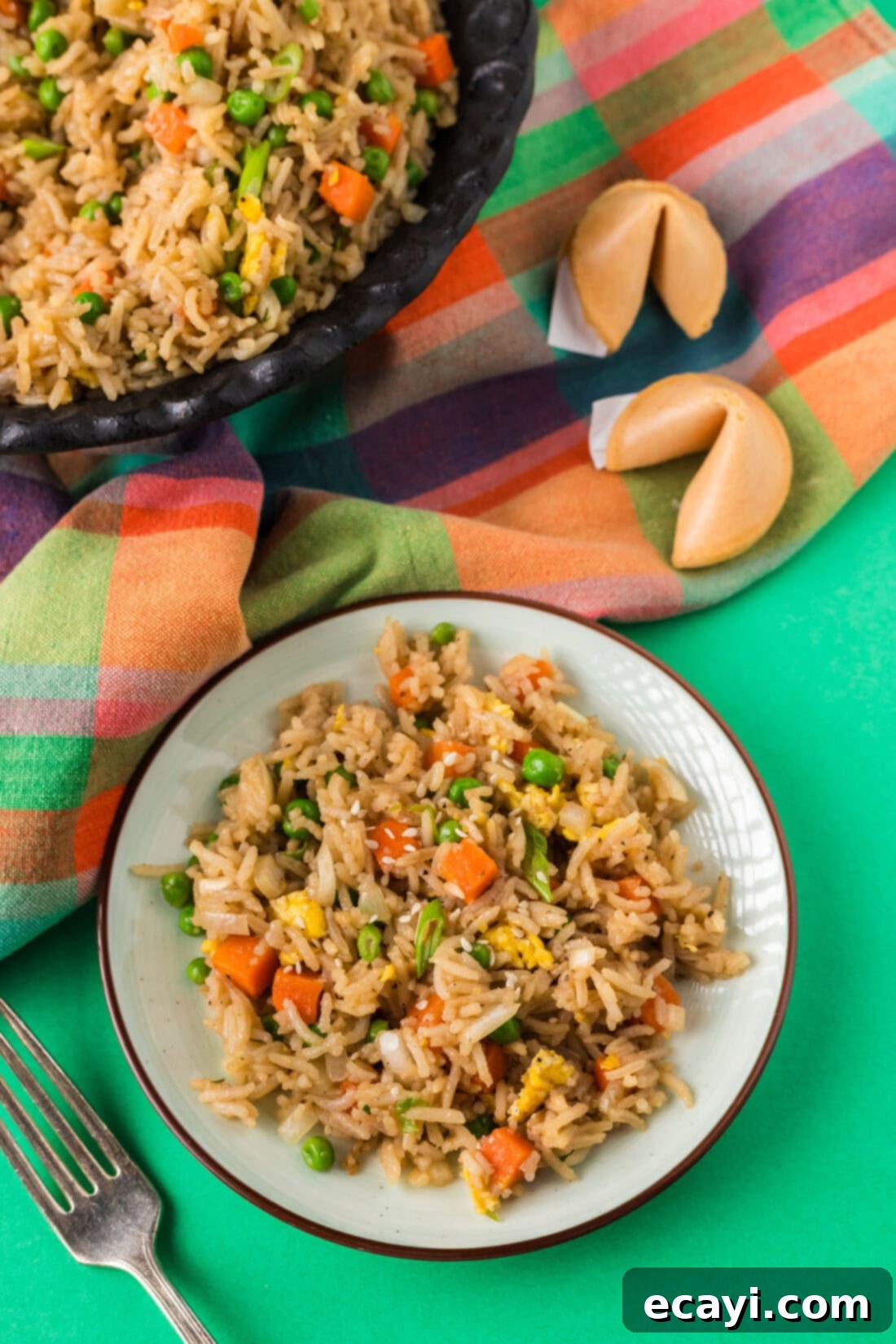
Delicious Serving Suggestions for Your Fried Rice
This versatile fried rice makes an excellent companion to a wide array of main courses. Pair it with savory grilled beef, tender slow-cooked pork, crispy pan-fried chicken, marinated tofu, or succulent sautéed shrimp for a complete and satisfying meal. To further enhance its flavor, consider topping your fried rice with additional drizzles of soy sauce, a spoonful of sweet duck sauce, or a spicy kick of sriracha for those who love a bit of heat. A generous sprinkle of freshly sliced green onions (scallions) not only adds a vibrant garnish but also a refreshing, pungent contrast to the rich flavors. For an extra authentic touch, a fried egg placed on top of each serving is always a welcome addition.
Explore More Delicious Fried Rice Recipes
If you’ve fallen in love with making homemade fried rice, there’s a whole world of variations to explore! Each offers a unique twist on this classic dish, incorporating different proteins, vegetables, and flavor profiles. Dive into these other fantastic fried rice recipes to expand your culinary horizons:
- Shrimp Fried Rice: A quick and flavorful option with juicy shrimp.
- Chicken Fried Rice: A hearty and satisfying family favorite.
- Pineapple Fried Rice: A sweet and savory Thai-inspired delight, often served in a pineapple shell.
- Korean Fried Rice: Featuring a spicy kick and often gochujang.
I love to bake and cook and share my kitchen experience with all of you! Remembering to come back each day can be tough, that’s why I offer a convenient newsletter every time a new recipe posts. Simply subscribe and start receiving your free daily recipes!
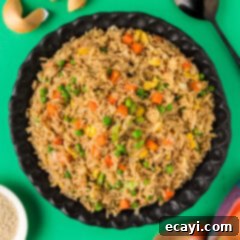
Classic Easy Fried Rice
IMPORTANT – There are often Frequently Asked Questions within the blog post that you may find helpful. Simply scroll back up to read them!
Print It
Pin It
Rate It
Save ItSaved!
Ingredients
- 1 Tablespoon olive oil
- 1 Tablespoon minced garlic
- ½ cup diced onions
- 1 cup frozen peas and carrots
- 2 teaspoons garlic salt
- 1 teaspoon black pepper
- 2 large eggs
- 2 Tablespoons butter
- 8 cups cooked white rice
- 3 Tablespoons oyster sauce
- ¼ cup soy sauce
- 1 ½ Tablespoons toasted sesame oil
Garnish
- sliced green onions
Things You’ll Need
-
Large skillet or wok
Before You Begin
- The secret to excellent fried rice is utilizing leftover, chilled rice. However, if you’re cooking rice fresh, plan to cook about 2.5 to 3 cups of raw white rice (such as Jasmine or long-grain) to yield approximately 8 cups of cooked rice needed for this recipe. Once cooked, spread the hot rice on a tray or plate to cool quickly, then refrigerate for several hours or overnight until completely chilled and firm. Fresh, warm rice will clump and become mushy, making it unsuitable for frying.
Instructions
-
Heat olive oil in a large skillet or wok over medium-high heat until it shimmers. Add the minced garlic and sauté for one minute until fragrant.1 Tablespoon olive oil, 1 Tablespoon minced garlic
-
Add the diced onions, frozen peas, and carrots. Season with garlic salt and black pepper. Cook for 3-4 minutes, stirring frequently, until the vegetables are tender-crisp. Remove them from the skillet and set aside on a plate or separate pan.1/2 cup diced onions, 1 cup frozen peas and carrots, 2 teaspoons garlic salt, 1 teaspoon black pepper
-
In a small bowl, beat the 2 large eggs thoroughly with a fork until the yolks and whites are fully combined.2 large eggs
-
Return the empty skillet to the stove (no need to clean it). Melt 2 Tablespoons of butter over medium-high heat.2 Tablespoons butter
-
Add the beaten eggs to the melted butter and stir regularly with a rubber spatula, breaking them into small, fluffy scrambled pieces. Once cooked through, remove the scrambled eggs to the same plate as the vegetables.
-
Return the skillet to the stove. Add the 8 cups of cooked, chilled rice, oyster sauce, and soy sauce. Stir vigorously to combine, breaking up any rice clumps and ensuring the sauces evenly coat all the rice grains. Fry for several minutes until the rice is heated and lightly toasted.8 cups cooked white rice, 3 Tablespoons oyster sauce, 1/4 cup soy sauce
-
Add the reserved vegetable mixture and scrambled eggs back into the skillet with the fried rice. Stir everything together gently but thoroughly until well combined and all components are heated through.
-
Finally, drizzle the 1 ½ Tablespoons of toasted sesame oil over the fried rice. Stir it in well to infuse the entire dish with its distinctive nutty aroma and flavor.1 1/2 Tablespoons toasted sesame oil
-
Garnish generously with freshly sliced green onions (scallions) just before serving, if desired, for a final touch of freshness and color. Serve immediately and enjoy your delicious homemade fried rice!sliced green onions
Expert Tips & FAQs
- This recipe yields approximately 4-5 generous servings, totaling around 9 cups of delicious fried rice. It’s perfect for a family meal or for having leftovers to enjoy.
- To store leftover vegetable fried rice, transfer it to an airtight container and refrigerate for up to 3 days. When reheating, a splash of water or a few drops of oil can help restore moisture and texture, whether in a skillet or microwave.
- For an extra boost of flavor, consider adding a dash of fish sauce or a pinch of white pepper to your fried rice. These ingredients are commonly used in various Asian cuisines and can enhance the overall umami profile.
- Don’t overcrowd your pan. If you’re making a larger batch, it’s better to cook the rice in two separate batches to ensure it fries properly and develops that desirable slightly crispy texture, rather than steaming.
- Feel free to customize your fried rice with your favorite additions like cooked and diced chicken, pork, shrimp, or tofu. Ensure any added protein is already cooked before incorporating it into the final steps of the fried rice preparation.
Nutrition
The recipes on this blog are tested with a conventional gas oven and gas stovetop. It’s important to note that some ovens, especially as they age, can cook and bake inconsistently. Using an inexpensive oven thermometer can assure you that your oven is truly heating to the proper temperature. If you use a toaster oven or countertop oven, please keep in mind that they may not distribute heat the same as a conventional full sized oven and you may need to adjust your cooking/baking times. In the case of recipes made with a pressure cooker, air fryer, slow cooker, or other appliance, a link to the appliances we use is listed within each respective recipe. For baking recipes where measurements are given by weight, please note that results may not be the same if cups are used instead, and we can’t guarantee success with that method.
